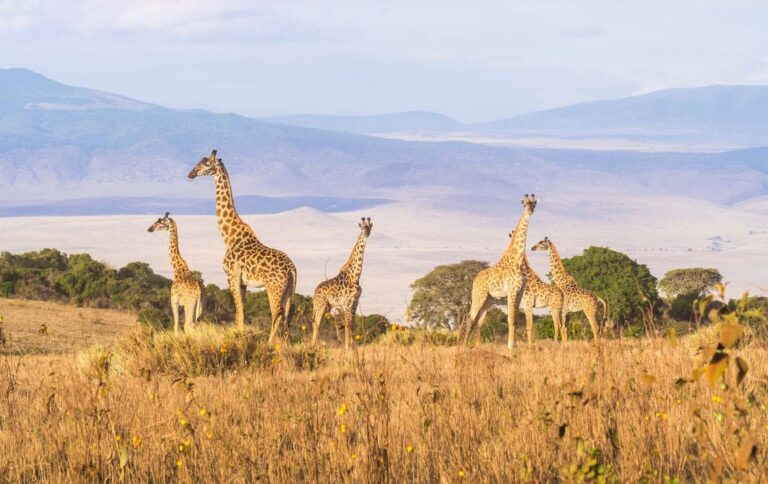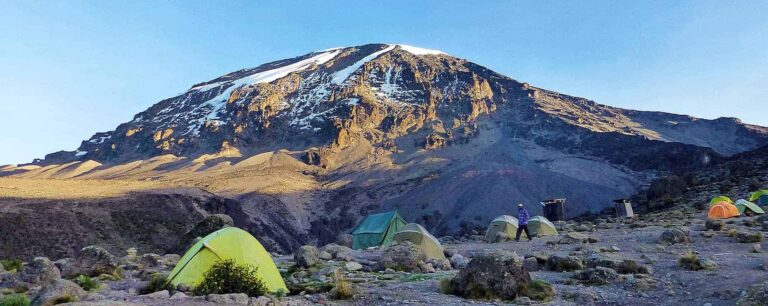Arusha National Park is a gem located in the northeastern region of Tanzania, close to the bustling town of Arusha. This proximity makes it an easily accessible destination for tourists who often visit the park as a day trip from Arusha or en route to the more famous northern safari circuit destinations like Serengeti and Ngorongoro Crater. The park covers approximately 137 square kilometers, encompassing a diverse range of habitats that include lush forests, open savannas, and the scenic beauty of the Momella Lakes and the towering Mount Meru, the second highest peak in Tanzania.
The climate in Arusha National Park is typically mild and temperate due to its elevation, ranging from 1,400 to 4,566 meters above sea level. The park experiences two main rainy seasons: the long rains from March to May and the short rains in November and December. During these periods, the park’s vegetation becomes lush and green, providing a beautiful backdrop for wildlife viewing and photography. The dry season, from June to October, sees less rainfall and cooler temperatures, making it a pleasant time for hiking and other outdoor activities.
Arusha National Park boasts a rich variety of wildlife. While it is not home to the Big Five (elephants, lions, rhinos, leopards, and buffaloes), it offers sightings of some fascinating and unique animals. Visitors can spot giraffes, zebras, warthogs, and various antelope species such as bushbucks and dik-diks. The park is also a haven for primate enthusiasts, with black-and-white colobus monkeys and blue monkeys being commonly seen. Birdwatchers will find the park particularly appealing, as it hosts over 400 bird species, including flamingos, herons, and trogons, especially around the Momella Lakes.
The best time to visit Arusha National Park depends on the activities one is interested in. For general wildlife viewing and enjoying the park’s diverse landscapes, the dry season from June to October is ideal. During this time, animals are more easily spotted around water sources, and the clear skies provide stunning views of Mount Meru and Kilimanjaro. However, for those interested in birdwatching, the wet seasons (November to December and March to May) are more rewarding, as many migratory birds are present, and the park’s flora is at its most vibrant. Regardless of the season, Arusha National Park offers a unique and intimate safari experience, distinct from the larger, more crowded parks in Tanzania.







